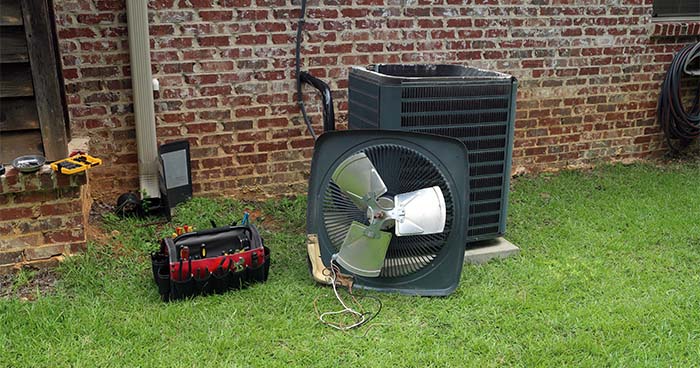With an Energy-Efficient Home, Every Day Is Earth Day
Going green is not just important for the planet, but for your wallet. Poor home efficiency can contribute to hundreds in high utility bills, not to mention wasting heat, air, water, and electricity.
Technology has come a long way, so there’s no better time to update your appliances and adopt greener habits to make your home as energy-efficient as possible.
Energy Efficiency in the Kitchen
Increase Refrigerator Temperature Settings
Refrigerators often run colder than they need to. You don’t need super-cold temperatures to keep your food from spoiling, so consider increasing your refrigerator’s temperature. With your refrigerator temperature of 37 degrees and a freezer temperature of 0 degrees, you can keep your food safe and still save money on your electric bill.
Invest in ENERGY STAR Appliances
ENERGY STAR refrigerators offer energy efficiency without sacrificing the features that matter most. If you update your refrigerator to a newer, energy-efficient ENERGY STAR model, you could see roughly a 9% efficiency over other brands.
Use the Burner Wisely
The different size burners on your stove are important for safety, energy, and time efficiency. They’re designed to work with compatible cookware to cook your food effectively without wasting excess energy or causing a fire hazard. Make sure you always use the most appropriate burner.
Turn Off the Ice Maker
Automatic ice makers are convenient, but do you really need them? Old-fashioned ice cube trays are just as effective and use much less energy and water. On average, automatic ice makers increase a refrigerator’s energy use by 20%, so turning yours off can make a huge difference in waste and energy costs.
Wash Your Laundry in Cold Water When Possible
Your washer uses up to 90% of its energy on heating water. The remaining 10% is all it takes to run your washer. Whenever possible, wash your clothes in cool or cold water to reduce your energy use – it’s also better for your clothes.
Energy Efficiency in the Bathroom
Install a Low-Flow Showerhead
Low-flow showerheads use about half the water as conventional showerheads each minute. Over the course of your shower, this difference can be staggering. Low-flow showerheads give you the same pleasant shower experience, but they save around 2.5 gallons of water per minute.
Turn Off Unnecessary Water
Running water between use, such as when you wash your face, brush your teeth, or shave, wastes a lot of water and contributes to high water bills. Get in the habit of turning off the water when you’re not using it. With just this small habit, you can gain about $170 a year in savings, according to the Environmental Protection Agency (EPA).
Replace Incandescent Light Bulbs with Compact Fluorescent Lamps (CFLs) or LED Bulbs
Manufacturers stopped making incandescent bulbs in 2014, replacing them with more efficient types like LED and compact fluorescent lamps (CFLs). Most homes have around 40 or more bulbs, so switching your old incandescent bulbs to more energy-efficient options can really add up.
Energy Efficiency in the Home
Schedule Regular Tune-Ups for Your HVAC System
Any appliance runs best with regular maintenance, but it’s especially true for HVAC systems. These systems take a lot of wear and tear, and they won’t run as efficiently if they’re worn out or old. Make sure you schedule a tune-up for your HVAC system to get it running its best for both summer and winter.
Assess Your Insulation and Consider Investing in New or Better Insulation
Insulation slows the rate of heat that flows out of the house in winter or into the house in summer, requiring less energy to keep your house heated or cooled. If your home’s insulation is old, damaged, or absent, you can lose a lot of heat and air and struggle to keep your home at the ideal temperature. Consider replacing your old insulation with newer and better options for a more comfortable and efficient home.
Lower Your Thermostat
When you’re not home, turn down the thermostat by 10 or 15 degrees. Just this small change in temperature can reduce your energy costs by 5-15% each year, according to Energy.gov.
Weather Seal, Update, or Replace Your Windows
Old or damaged windows allow heat and air to leak from your home, making your HVAC system work harder to keep it comfortable and increasing your energy costs. If your windows are damaged or outdated, think about replacing them with new energy-efficient windows. If they just need some small repairs, you can weatherstrip the frame and caulk any cracks to prevent air from escaping.
Start a Compost Pile
Compost offers natural fertilization and a way to recycle yard and food waste.
Here’s how you can get started composting yourself:
- Build a compost pile in an open, level space that has good drainage.
- Use organic material in your compost. Remember nitrogen/greens and carbon/browns. These layers should be alternated.
- Avoid using fecal matter or waste in your compost pile, and leave out animal products like meat, dairy, and fat.
- Turn your compost routinely to mix it together and accelerate the decomposition process.






